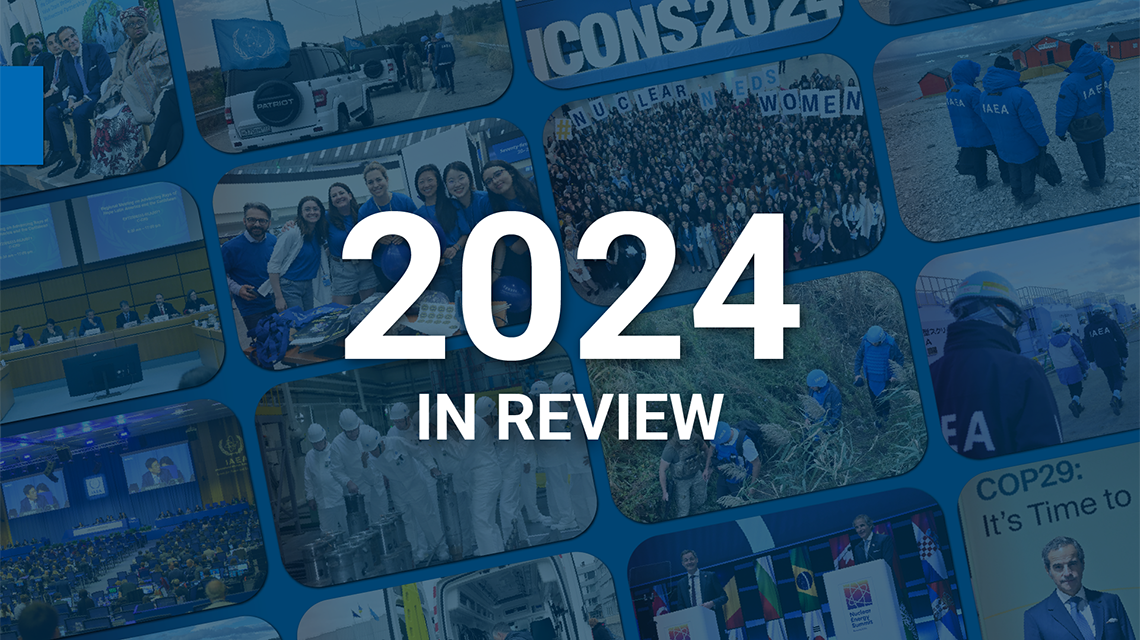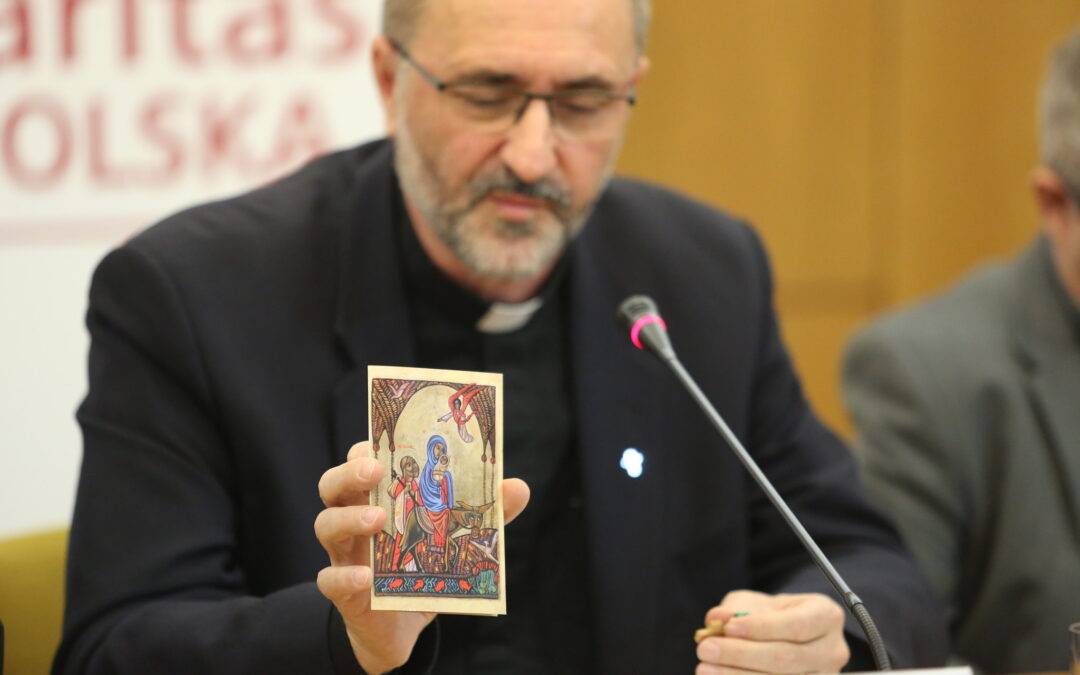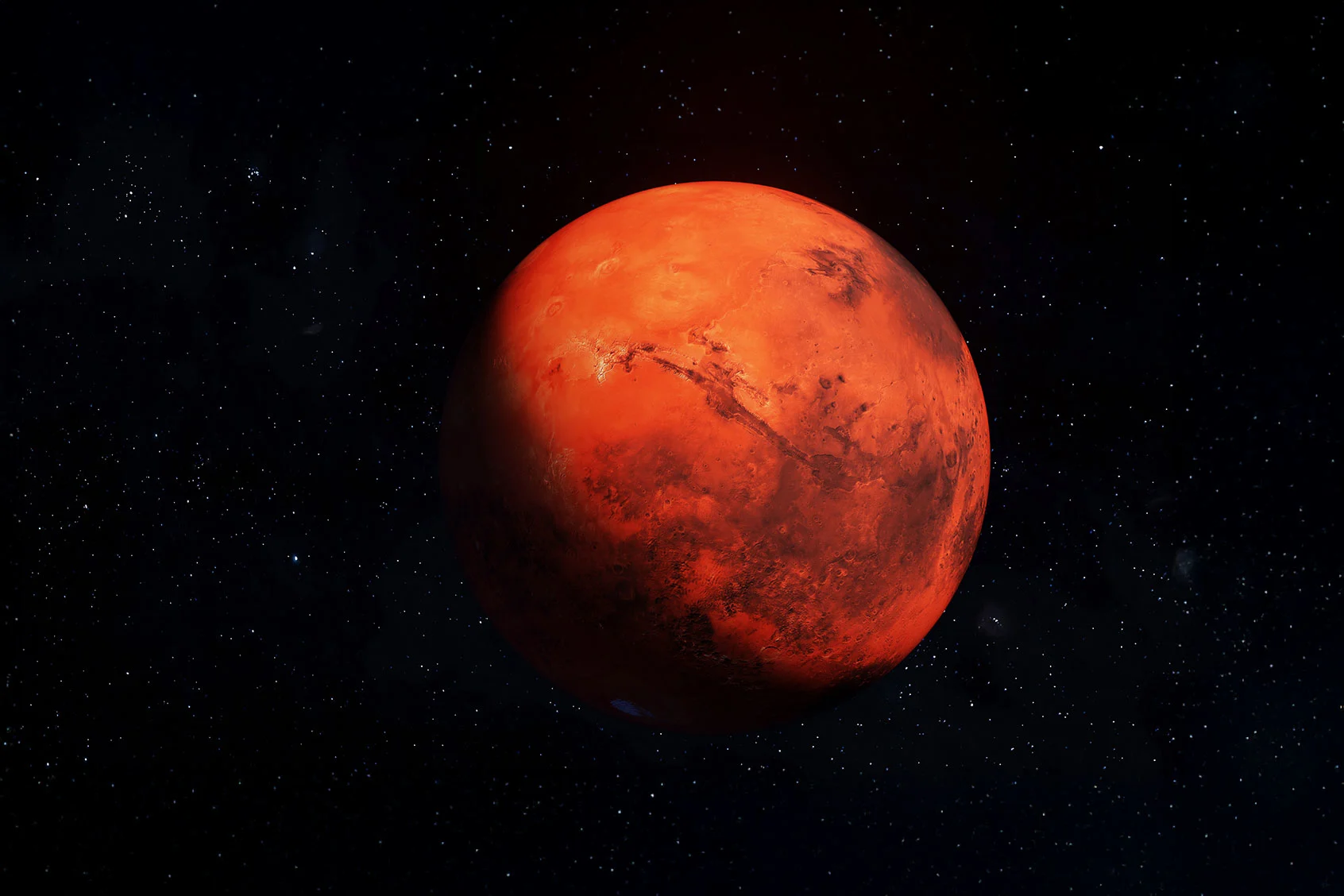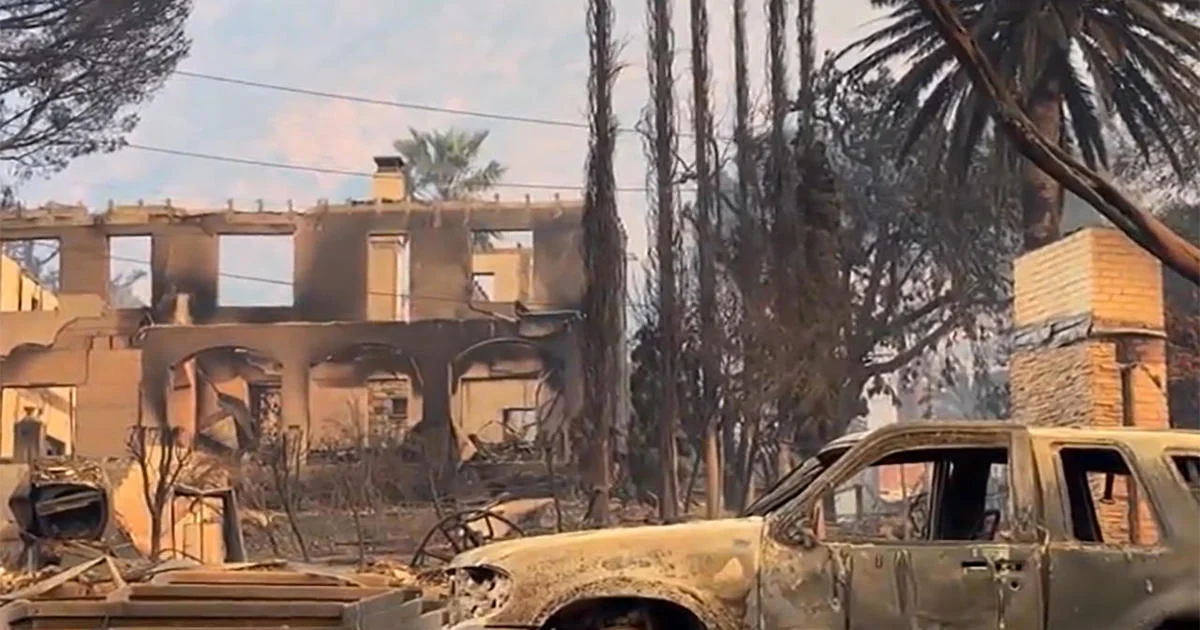The year 2024 has been marked by turmoil and volatility, with events unfolding across various regions of the world, contributing to a sense of unpredictability in international relations. The International Institute for Middle-East and Balkan Studies (IFIMES), an established institution based in Ljubljana, Slovenia, has long been a trusted source for in-depth analysis on global developments, particularly with regard to the Middle East, the Balkans, and other key regions.
Dr. J. Scott Younger, a prominent figure in international affairs, serves as the President Commissioner at Glendale Partners and as a member of the IFIMES Advisory Board. His insights, grounded in his vast experience, offer valuable perspectives on the geopolitical dynamics of the year. In his article, “2024 - A Year of Unrest and Uncertainty,” Dr. Younger meticulously examines the complex events that have shaped the political and social landscape in 2024.
The year began with continuing challenges in the Middle East, where long-standing conflicts and political instability have persisted. Tensions between various regional powers have escalated, leading to further instability in nations such as Syria, Iraq, and Yemen. The ongoing power struggle in Iran, coupled with its nuclear ambitions, remains a focal point of international concern, drawing attention from both Western powers and neighboring states.
In the Balkans, the legacy of past conflicts continues to influence contemporary politics. The region remains a delicate balancing act, with tensions between ethnic groups and political factions simmering beneath the surface. Countries like Bosnia and Herzegovina, Kosovo, and North Macedonia are grappling with internal divisions, while the influence of foreign powers, particularly Russia and the European Union, shapes the trajectory of these nations.
The global stage has not been immune to the reverberations of these regional tensions. In the United States, the political landscape has been fraught with partisan divisions, contributing to a climate of uncertainty. The rise of populist movements and political extremism has led to deepening divides, both within the country and in its foreign policy approach. In Europe, the aftermath of the Brexit referendum continues to affect the cohesion of the European Union, with economic and political ramifications reverberating throughout the continent.
Dr. Younger highlights the unpredictable nature of international relations in 2024, noting how rapidly evolving situations in one region can have cascading effects on the global stage. The interconnectedness of the modern world, driven by technology, trade, and information, has amplified the impact of these events, making it increasingly difficult to forecast outcomes with certainty.
In addition to geopolitical issues, 2024 has seen the continued rise of non-state actors, including terrorist organizations and transnational criminal networks. These entities have become increasingly sophisticated, leveraging modern technology and social media to spread their influence and destabilize regions. The fight against terrorism and organized crime remains a top priority for governments around the world, though the effectiveness of their efforts has been questioned.
Furthermore, the global economic landscape has been marked by volatility, with many countries experiencing financial crises or economic slowdowns. The effects of the COVID-19 pandemic are still being felt, as nations struggle to recover from the economic fallout. Supply chain disruptions, inflation, and rising energy prices have contributed to growing social unrest in various countries, further exacerbating political instability.
Dr. Younger’s article presents 2024 as a year where the world is grappling with multiple crises simultaneously, creating a perfect storm of uncertainty. While the year has seen some efforts at diplomacy and conflict resolution, the persistence of deep-seated issues and the emergence of new challenges suggest that the road ahead will be fraught with difficulty.
One of the key takeaways from Dr. Younger’s analysis is the need for greater international cooperation in addressing the challenges of 2024. While regional conflicts and crises may seem distant to some, their global implications cannot be ignored. In a world that is more interconnected than ever, the consequences of political instability, economic crises, and security threats are felt far beyond their point of origin.
As the year continues to unfold, it remains to be seen whether global leaders can navigate these challenges effectively. The path toward stability will likely require a delicate balancing act, with diplomatic efforts, economic reforms, and security measures all playing critical roles. Ultimately, the year 2024 will be remembered as one where the world’s fragility became all too evident, and the need for cooperation, understanding, and resilience has never been more urgent.
2024: A Year of Unrest, Political Uncertainty, and Global Struggles
As 2024 draws to a close, the year has been defined by ongoing conflicts, unrest, and a series of political struggles, both domestically and globally. With two major wars still ongoing, pockets of unrest in various regions, and millions of people fleeing their homes in search of safety, the world has found itself in a state of flux. Amidst this turmoil, the Western world has been preoccupied with its own internal challenges, grappling with political discontent and frustration.
The US Presidential Elections: A Political Roller Coaster
The United States, the leading power in the Western world, has found itself navigating a period of self-inflicted confusion and lack of direction. The looming presidential election, set for late 2024, brought into sharp focus the political divide and the sense of uncertainty surrounding the country’s future.
On one side of the political spectrum stood an aging President, Joe Biden. Once hailed as the steady hand needed after the chaotic years of Donald Trump’s presidency, Biden, by 2024, had begun to show signs of aging and mental fatigue, raising concerns among some sections of the electorate. His increasing absent-mindedness and struggles to articulate coherent policies fueled speculation about his ability to serve another term. Despite these concerns, Biden remained determined to run for re-election, hoping to secure a second term and leave a legacy of stability and progress.
However, the opposition party, the Republicans, posed their own set of challenges. Donald Trump, the former president who had served from 2017 to 2021, emerged as the Republican candidate once again. Trump's presidency had been marked by controversy, unpredictability, and a long list of legal issues. His maverick style and populist rhetoric had polarized the nation and the world. Despite facing multiple misdemeanours and ongoing investigations, Trump had managed to retain a loyal base of support. As the election approached, the stakes were high: Would the country return to the familiar chaos of the Trump presidency, or would Biden continue to steer the ship of state?
In the midst of mounting pressure from within his own party, Biden reluctantly decided to step down, making the difficult decision not to seek re-election in January 2025. With some honesty and acknowledgment of his limitations, Biden endorsed his Vice President, Kamala Harris, as his successor. Harris, the first female vice president in US history, had been seen by many as a rising star in the Democratic Party, and her candidacy brought a fresh dynamic to the political landscape. Early polls indicated a strong surge of support from party members and parts of the electorate.
However, the general election proved to be a stunning setback for Harris and the Democrats. Despite early optimism, Harris was soundly defeated by Donald Trump in the election, marking the return of Trump to the White House in the coming weeks. The results were a sobering reminder of the deep divisions within the United States and the challenges facing the democratic process in a highly polarized nation.
Global Struggles Amidst Political Instability
While the US was consumed by its own political drama, the world at large continued to be plagued by instability and conflict. The year saw the continuation of two major wars, both of which had far-reaching implications for global peace and security. These conflicts, along with ongoing tensions in various regions, contributed to a global sense of unease.
In addition to the wars, pockets of unrest erupted in several parts of the world. From the Middle East to sub-Saharan Africa, political instability and economic hardship continued to drive people from their homes. Refugees and migrants sought shelter in safer regions, often facing dangerous journeys and uncertain futures. The global refugee crisis worsened as millions of people were displaced by violence, climate change, and political repression.
While the Western world grappled with its own domestic challenges, it also found itself struggling to address the mounting humanitarian crises around the globe. The responsibility to support refugees and migrants was increasingly being shifted to countries in the developing world, while wealthier nations struggled to balance their own domestic issues with their global obligations.
A Year of Frustration and Uncertainty
The year 2024 was, in many ways, a reflection of broader trends of disillusionment and frustration across the Western world. The ongoing political battles in the US, coupled with the rise of populist movements, highlighted the deepening divisions within societies. As voters grew increasingly dissatisfied with the status quo, politicians found themselves under increasing pressure to offer bold solutions—though whether these solutions would ultimately bring about lasting change remained uncertain.
In Europe, political divisions also deepened. Nationalist and far-right movements gained traction in several countries, challenging the liberal democratic order that had characterized much of the post-World War II era. Meanwhile, the fallout from Brexit continued to create challenges for the European Union, as economic and political tensions mounted. The global economy, too, faced significant challenges, with inflation, rising energy prices, and supply chain disruptions exacerbating the difficulties faced by ordinary citizens.
Despite these challenges, the international community continued to struggle with its own collective response to the crises of the year. Diplomacy was tested at every turn, with global powers competing for influence in a world that was becoming increasingly fragmented. Leaders in the West found themselves torn between addressing domestic concerns and maintaining their roles on the global stage.
Looking Ahead: A Divided Future
As the year 2024 came to a close, the world found itself at a crossroads. The US, under the shadow of the upcoming second Trump presidency, was poised to grapple with the deep divides that had plagued the nation throughout the election cycle. The global community, meanwhile, faced an uncertain future, with political instability, ongoing conflicts, and a rising tide of populism threatening to reshape the international order.
The twists and turns of the US presidential election were a microcosm of the broader challenges facing the world in 2024. While some hoped for a new era of unity and progress, others feared that the events of the year would only deepen existing fractures. The coming months would likely bring more uncertainty and unrest, but they would also offer an opportunity for the international community to chart a new course—if leaders could find the will and wisdom to do so.
In the midst of all the turmoil, the world’s people remained resilient. Despite the political upheavals and conflicts, there was still a shared hope for a safer, more secure future. As nations prepared for the transition into 2025, the questions of leadership, diplomacy, and global cooperation loomed large. Would the world be able to come together to address the challenges ahead, or would the divisions of the past year only continue to widen? Only time would tell.
War in Gaza: The Escalating Conflict
The first half of 2024 saw the war in Gaza intensify dramatically, following the brutal attack by Hamas, a Palestinian faction based in the Gaza Strip, on Israel on October 7, 2023. This violent event, which took many lives and caused widespread damage, overshadowed other global conflicts, including the ongoing war in Ukraine, for much of the year. The attack marked the beginning of a new phase in the long-standing Israeli-Palestinian conflict.
In response to the attacks, U.S. President Joe Biden made an early visit to Israel to meet with Israeli Prime Minister Benjamin Netanyahu. Biden expressed his sympathy, affirming that Israel had the full support of the United States in whatever military actions were necessary. Biden's statement, in which he declared, "I am proud to be a Zionist," reinforced the U.S.'s unwavering stance in support of Israel. This endorsement was eagerly received by Netanyahu and set the tone for Western nations' reactions, most of which followed the U.S.'s lead, albeit with some reluctance.
Escalation of Violence and Destruction
The support for Israel translated into a significant rearming of the Israeli defense forces, which, in turn, led to an intensification of the military campaign against Gaza. The Israeli military's airstrikes, targeting various cities and facilities in Gaza, have devastated the region. Once home to 2.5 million people, Gaza is now largely reduced to rubble. As of the latest reports, approximately 48,000 people have been killed, the vast majority due to aerial bombardments.
On the ground, Israeli forces have steadily expanded their control, particularly in the northern parts of Gaza, in preparation for the settlement of Jewish families in the area. This move is in line with a controversial agenda pushed by Israel’s far-right factions, which have significant influence over the country's policies. These factions, supported by current government leaders, aim to displace Palestinians from both Gaza and the West Bank. This policy of relocating Palestinians from the West Bank, which has been ongoing for decades, continues to be carried out with little international intervention, despite widespread condemnation.
International Reactions and the Role of the UN
Throughout the conflict, the United Nations (UN) has repeatedly called for a ceasefire and voiced concern over the humanitarian toll of the war. Many of the UN's humanitarian workers, stationed in Gaza to aid the population, have been killed in the crossfire, largely due to Israeli airstrikes. Despite these calls for peace, efforts to halt the war through the UN General Assembly have been consistently blocked by the United States, which vetoed multiple resolutions aimed at curbing the violence.
This pattern of U.S. vetoes, while ensuring continued support for Israel, has led to international frustration, as the conflict has shown no signs of abating. The toll on Gaza’s population continues to grow, with little to no diplomatic progress in sight.
The Future of Gaza and the Israeli-Palestinian Conflict
As the war continues with no clear resolution, Gaza remains in a state of devastation. The Israeli government's actions, supported by the far-right factions, suggest that Israel’s long-term goal is not just military victory but also the strategic and permanent displacement of Palestinians from occupied territories. The international community remains divided, with some nations calling for stronger action against Israel's military tactics, while others maintain unwavering support for Israel’s right to defend itself.
The ongoing conflict has deepened the divisions between Israelis and Palestinians, further entrenching the cycle of violence that has plagued the region for decades. With the U.S. continuing to veto UN resolutions aimed at halting the war, and Israel’s military campaign unabated, the situation shows no signs of easing in the immediate future.
Short War in Lebanon: Hezbollah's Escalation and Israel's Retaliation
In the second half of 2024, the conflict in the Middle East spread beyond Gaza, with Hezbollah, a militant group based in southern Lebanon, escalating its activities in solidarity with Hamas. Hezbollah, often labeled as a "terrorist group" by various international actors, began increasing its aerial bombardments on Israel, which prompted Israel to launch its sixth military invasion of southern Lebanon on October 1, 2024.
The invasion saw Israel extend its bombing campaign to Beirut, the capital of Lebanon, with several buildings hit and approximately 750 Lebanese citizens killed. Israel's airstrikes primarily targeted Hezbollah positions, but the toll on Lebanese civilians was significant. Despite the extensive damage, the war continued for nearly two months until a ceasefire was brokered by France and the United States on November 27. While the ceasefire ended large-scale hostilities, sporadic border skirmishes between Hezbollah and the Israeli Defense Forces (IDF) persisted for some time.
Throughout the conflict, U.S. Secretary of State Antony Blinken repeatedly voiced hope for a diplomatic resolution, often facilitated by Qatar and Egypt. However, these negotiations were repeatedly undermined, with both Hamas and the Israeli government rejecting proposed agreements at various points.
After the ceasefire in Lebanon, Israel shifted its focus back to Gaza, where the conflict with Hamas remained ongoing. The situation in both Gaza and Lebanon reflected the deepening instability in the region, with international efforts to broker peace failing to yield lasting results.
The Two-State Solution: A Longstanding Proposal Amidst Continued Tensions
The idea of a two-state solution, proposing the establishment of an independent Palestinian state alongside Israel, was first prominently brought forward by U.S. President Jimmy Carter in the late 1970s. Carter, who passed away at the age of 100 just before the New Year, was widely admired for his tireless efforts in fostering peace around the world, including his role in facilitating the Camp David Accords, which led to peace between Israel and Egypt. His advocacy for the two-state solution remained a cornerstone of his diplomatic vision, aiming for a peaceful resolution to the Israeli-Palestinian conflict.
The two-state solution has been presented as a potential resolution on multiple occasions over the decades, yet it remains highly controversial and fraught with challenges. While it has received support from the international community and moderate voices on both sides, the idea has encountered significant opposition, particularly from extremists within Israel. These opponents, often from the far-right, reject the proposal, arguing against the establishment of a Palestinian state and advocating for territorial expansion instead.
A fundamental obstacle to the two-state solution is the profound lack of trust between Israelis and Palestinians, further exacerbated by decades of conflict, violence, and failed peace negotiations. With extremists on both sides entrenched in their positions, achieving mutual agreement remains a distant prospect. The path forward appears uncertain, and with the current political climate, the prospects for the two-state solution appear increasingly bleak.
As the world reflects on Carter's legacy and his vision for peace, it also faces a harsh reality: the road to peace remains complex and fraught with difficulty. Trust, compromise, and political will will be needed in the coming years to resolve the conflict, but with tensions running high and radical factions opposing change, the future remains uncertain.
Trump’s Choices for Support Roles: Loyalty Over Expertise
As the year drew to a close, developments in the United States took center stage with the return of Donald Trump to the political spotlight. Known for his unorthodox approach, Trump quickly began to make waves with his selection of key advisers and cabinet positions. As expected, his choices emphasized loyalty above all else—an attribute that has been a hallmark of his political strategy.
However, these appointments are not without controversy. While many of Trump’s picks will need to be confirmed by the newly elected Congress, one striking feature of his selections is the significant number of extremely wealthy individuals, many of whom are billionaires. This has raised eyebrows, as it mirrors a pattern seen in other political arenas, particularly in Russia under Vladimir Putin. Putin famously surrounded himself with oligarchs—wealthy figures who were given key positions of power in exchange for their financial and political support, creating a system of reciprocal benefits. With Trump’s choices, some analysts wonder if he is adopting a similar strategy, relying on a network of wealthy backers who could both consolidate his political power and ensure their own financial gain.
Despite the focus on loyalty, some of Trump’s selections have yet to master the art of discretion. One in particular has made headlines for their outspoken nature, drawing attention for comments that seem to stray from the carefully cultivated image Trump aims to project. As the administration gears up for a new term, the true impact of these appointments—and the dynamics of Trump’s relationships with his advisers—remain to be seen. The question remains: Will these wealthy appointees wield influence quietly, or will their outspoken tendencies pose a challenge to the president’s plans?
Putin's Actions in 2024: Struggles, Alliances, and Surprises
Vladimir Putin's year in 2024 was marked by significant challenges, strategic shifts, and some unexpected developments. The ongoing war with Ukraine, which Putin initially labeled as a "special military operation," reached a frustrating stalemate in the first half of the year. Despite Russia’s military might, the conflict had become a war of attrition, and Putin found himself struggling with both internal and external pressures.
The Stalemate in Ukraine
In early 2024, the Russian military found itself in a difficult position. Many Russians, particularly those of military age, had fled the country to avoid conscription, with many choosing to escape through the open borders to the south. This exodus posed a problem for Putin, who struggled to maintain a sufficient number of troops on the frontlines. Meanwhile, the Ukrainian forces, though also suffering from a shortage of personnel, managed to slow down the Russian advance through a mixture of tactical retreat and stubborn resistance. As Russia faced increasing difficulties, Putin sought external support.
In a strategic move, Putin reached out to North Korea, securing additional troops to bolster his forces. With this influx of soldiers, Russian forces made gradual gains, though not without difficulty. The Ukrainian resistance remained formidable, and the war continued to grind on. The situation on the ground remained fragile, and many analysts began questioning how long the conflict could continue before either side was forced into a negotiation.
Putin’s relationship with President Xi Jinping of China became crucial in the year ahead, particularly as the two leaders cooperated more closely on military and economic matters. Russia’s increasing reliance on China was highlighted by the exchange of drones from Iran and military support from North Korea. At the same time, Putin’s threats of dire consequences—such as the use of nuclear weapons—continued to escalate, especially as Ukraine received more advanced weaponry from the U.S. and NATO. These developments underscored the tense and volatile nature of the war, with global repercussions hanging in the balance.
The U.S. Administration and Peace Hopes
As the new U.S. administration prepared to take office, there were increasing calls for an end to the war in Ukraine. The Biden administration, while hesitant to make concessions, hinted that 2024 could be the year the conflict would come to a close. It was speculated that Ukraine might be pressured into ceding some territory to Russia in order to end the fighting. However, any such move would be fraught with complications, as Eastern Ukraine holds significant agricultural and mineral wealth, making the region highly valuable.
As discussions around peace continued, the United Nations was expected to play a role in any future agreements, particularly in terms of maintaining peace along the new borders. A lengthy period of UN oversight was seen as necessary to prevent further bloodshed and ensure the stability of any territorial changes. However, the difficult task of drawing borders and managing the delicate balance between the conflicting parties remained an issue that would require careful diplomacy and planning.
Putin and the BRICS Bloc
Amid the challenges in Ukraine, Putin also made some progress in strengthening Russia’s position on the global stage. One of his notable achievements was the 16th BRICS Summit, held in Kazan, Russia, from October 22 to 24, 2024. The BRICS bloc, which originally consisted of Brazil, Russia, India, China, and South Africa, saw the addition of new members: Ethiopia, Egypt, Iran, and the UAE. This expansion of the BRICS group was seen as a step toward creating a global alternative to Western-led economic institutions and markets.
The BRICS bloc already represented around 40% of the world’s population, but the addition of new countries helped solidify its position as a major economic and political force. The bloc sought to promote trade, investment, and cooperation among non-Western countries, with a particular focus on the Global South. The inclusion of nations from Africa, the Middle East, and Asia further broadened the group’s reach and influence, signaling a shift in global power dynamics.
A significant outcome of the summit was the creation of BRICS partner countries, further expanding the bloc’s influence and potentially offering an alternative to the U.S. and its allies in terms of global governance and trade. As the year ended, it was clear that Putin had managed to make headway in his efforts to build stronger ties with emerging economies and challenge Western dominance in global affairs.
Surprising Developments in Syria
Perhaps one of the most unexpected twists for Putin in 2024 came from Syria, a region where Russia has long held significant influence. A group once associated with Al-Qaeda swiftly moved in to overthrow the government of Bashar al-Assad, a longtime ally of Putin’s regime. The Syrian president was forced to flee the country, seeking asylum in Russia, his primary source of support during the years of civil war.
While the departure of Assad was welcomed by many, both within Syria and internationally, the situation presented a new set of challenges for Russia. The new leadership in Syria, although initially showing the right diplomatic moves to garner international support, faced the daunting task of uniting a country fractured by years of war and sectarian divisions. Several different groups with varying political, religious, and ideological backgrounds would have to be accommodated in any future peace process.
For Putin, the loss of influence in Syria was a blow. Russia had invested heavily in the region, both in terms of military support and political leverage. The shift in power posed a threat to Russia’s strategic foothold in the Middle East, and it was likely that Putin would attempt to meddle in the new political order to retain some degree of control. The first few months of 2025 would be crucial in determining whether Putin could maintain his influence in Syria or if the country would slip further out of Russia’s grasp.
Shifting Labels: Terrorism and New Challenges
As the year came to a close, the U.S. found itself grappling with how to label groups that had once been considered terrorists but were now making strides toward reform and cooperation. This issue was particularly relevant in the context of Syria and the broader Middle East, where groups with questionable pasts were beginning to play a larger role in shaping the future.
The question of who truly constitutes a “terrorist” was brought into sharp focus as Israel’s own actions raised questions about the morality of military operations in Gaza. With Russia’s military actions in Ukraine and Syria, as well as Israel’s conduct in Palestine, the international community was left to ponder the complexities of labeling groups and actions as “terrorist” while balancing geopolitical interests.
Looking Ahead: 2025 and Beyond
As 2024 came to an end, Putin’s actions had positioned him at the center of several global crises. From the war in Ukraine to the shifting alliances within BRICS and the evolving situation in Syria, Putin’s influence remained a significant factor in international affairs. The coming year, 2025, would be pivotal in determining the future of these conflicts, as well as Russia’s role in a rapidly changing world order.
Putin’s ability to maintain power, influence, and strategic advantage will be tested in the months ahead. The international community, particularly the United States, will have to navigate a complex and unpredictable global landscape, where Russia’s ambitions and actions continue to pose challenges to stability and peace.
Global Conflicts and Humanitarian Crises in 2024
While global focus often shifts toward major powers and conflicts, many other regions have been suffering in parallel, with dire humanitarian consequences and ongoing political struggles. Some of the most notable situations in 2024 include the ongoing civil wars in Sudan and Yemen, geopolitical tensions in Georgia, and the oppressive regime in Myanmar.
Sudan: A Civil War of Desperation
In Sudan, the civil war raged on with devastating effects. Thousands of civilians continued to die, and millions were forced to flee the country. The humanitarian crisis was worsened by the conflict’s protracted nature, with no clear path toward peace. The UN has been providing as much support as possible, but the situation calls for stronger intervention to bring the warring factions to the peace table. Efforts to mediate peace were hampered by the involvement of external powers supporting opposing sides, making the resolution of the conflict even more complicated. Without stronger international pressure and a united front, Sudan faces an uncertain future, where violence continues to claim lives and uproot communities.
Yemen: A Divided Country in Crisis
Yemen's conflict was another protracted and complex one in 2024. The country remained divided between the Houthi rebels, backed by Iran, and the government forces, which received support from a coalition led by Saudi Arabia. The warring factions had been using drones and missiles in a long-range war that also targeted Israel, with Israel responding with targeted bombings of strategic sites. The capital, Sana'a, faced severe challenges, particularly regarding water scarcity. Situated at 2,200 meters above sea level, the city was rapidly running out of water, with the UN warning that it would be depleted by 2025. This crisis, compounded by the ongoing war and economic collapse, has left the Yemeni people in desperate need of assistance. Divisions within the country have made a resolution even more challenging, with significant aid required to prevent the crisis from spiraling further.
Georgia: Geopolitical Tensions with Russia
Georgia, a small nation nestled at the crossroads of Europe and Asia, found itself in the midst of geopolitical tension in 2024. The country’s new prime minister showed signs of aligning with Moscow, while the majority of Georgians sought closer ties with the European Union. This led to protests and demonstrations, as many citizens pushed for greater integration with the West. Russia, under Vladimir Putin, has long eyed Georgia as part of its sphere of influence, partly due to historical ties (notably, Joseph Stalin’s Georgian origins). Putin believes that countries like Georgia, and several other nations bordering Russia, should orient themselves toward Moscow, not the West. As a result, Russia has often intervened in Georgia’s domestic affairs, leveraging its influence to sway political leaders toward Moscow’s interests. With tensions escalating, Georgia's future trajectory remains uncertain as it faces mounting internal divisions and external pressure from Russia.
Myanmar: The Military’s Grip on Power
Myanmar’s internal conflict, though less visible in global media, was no less brutal in 2024. Nearly four years after the military coup in February 2021, General Min Aung Hlaing's regime continued to hold power through repression and violence. The military junta had faced widespread international condemnation for its actions against civilians, including the targeted oppression of opposition forces, with reports of atrocities such as rape, pillage, and arson. The situation mirrored the atrocities committed against the Rohingya Muslim minority in 2017, a violent campaign that was condemned by the international community but largely ignored by Myanmar’s military and its allies.
The military junta's backing from China allowed it to maintain its grip on power, particularly in the northern regions, where valuable natural resources are mined and exported. The Chinese government has gained strategic access to the Indian Ocean through Myanmar, which also serves as a gateway for Chinese goods to sub-Saharan Africa, further cementing their influence in the region.
In a bid to legitimize its rule, the military junta announced plans to hold “free and democratic” elections in February 2025. This move, however, was largely seen as a façade, with the junta maintaining tight control over the political process. The release of 6,000 prisoners, many of whom had been incarcerated for dissent, was presented as a sign of goodwill, but the military’s repressive actions continued, including the execution of four political agitators. Despite the elections, an armed opposition continued to grow, and Myanmar’s future remained uncertain as the UN and ASEAN watched closely, offering limited support. Meanwhile, Aung San Suu Kyi remained a prisoner, her political future hanging in the balance as the military consolidated its power.
Conclusion: A Year of Struggle and Uncertainty
The global landscape in 2024 was defined by a series of ongoing conflicts and humanitarian crises. In Sudan, Yemen, Georgia, and Myanmar, political instability, civil war, and human suffering were prevalent, with international efforts at mediation often falling short. While regions like Sudan and Yemen urgently required stronger intervention to bring warring factions to the peace table, the geopolitical dynamics in places like Georgia and Myanmar demonstrated the complexities of global power struggles and local resistance movements. The year ahead would be critical in determining the future of these nations, with the hope that stronger international cooperation and strategic diplomacy could bring an end to some of the world’s most entrenched conflicts.
global politics and international relations. The shift in power dynamics, especially with the potential policy changes under a Trump presidency, could have profound implications not only for the United States but for the global order as well. Trump's promised resolutions to the ongoing wars could lead to either a more isolationist approach or a strategic shift in alliances and conflict resolutions. His handling of these crises will be pivotal in determining future foreign policy and international cooperation.
The situation in Syria, with its shifting alliances and the emergence of new power structures, will certainly be a focal point in the years ahead. The Middle East, always a volatile region, could see significant changes in how diplomacy is approached, especially if peace or a resolution becomes more achievable. This might prompt new alliances, perhaps involving unexpected players, and challenge long-held assumptions about geopolitical dynamics.
On a more global scale, the growing problem of freshwater scarcity will continue to garner attention, particularly as climate change exacerbates existing challenges. While space exploration offers an exciting frontier, the more immediate concerns—such as poverty, access to clean water, and human rights—remain pressing. These issues require sustained attention and collaboration, with solutions grounded in sustainability, equity, and long-term commitment.
By 2026, the world will likely still be grappling with many of the same challenges, but the outcomes of 2024's conflicts could redefine the course of history. The lessons learned in handling these crises could shape how nations respond to future global challenges, potentially altering the trajectory of international relations and the balance of power. However, one thing remains certain: despite the advancements in technology and exploration, humanity’s focus on solving basic, fundamental problems will still be critical.

























0 Comments